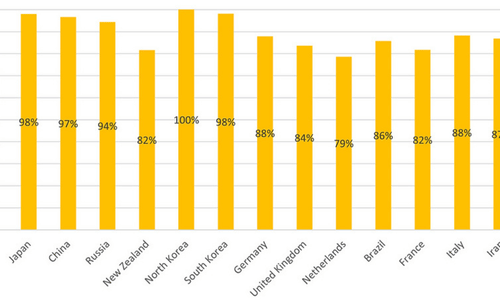Updated:
Introduction
These days, ensuring the security of your web applications is more critical than ever. With cyber threats constantly evolving, businesses must be proactive in safeguarding their digital assets from potential breaches. One effective approach to bolster your web application security is through penetration testing.
In this guide, we will explore the ins and outs of web application penetration testing, including what is tested, why it’s essential, and when to engage in testing. Ultimately, our goal is to help you understand the importance of investing in penetration testing to keep your web applications secure from emerging threats. Let’s dive in!
Web Application Penetration Testing: An Overview
Definition and purpose
Web application penetration testing, often referred to as “pen testing” or “ethical hacking,” is the process of simulating real-world cyber attacks on your web applications to identify and address security vulnerabilities. The primary goal of penetration testing is to evaluate your web application’s security measures and provide actionable insights for improvement. By proactively identifying weaknesses, you can implement necessary changes to prevent unauthorized access, data breaches, and other security incidents.
Types of penetration testing specific to web applications
There are several types of penetration testing that can be performed on web applications, each with its unique focus and approach. Some of the most common types include:
- Black-box testing: In this approach, the tester has no prior knowledge of the web application’s infrastructure, simulating an external attacker’s perspective. This method is effective in identifying vulnerabilities exploitable by attackers with no inside knowledge.
- Gray-box testing: Gray-box testing combines elements of both black-box and white-box testing. The tester has partial knowledge of the application’s infrastructure, which helps to identify vulnerabilities that may be missed in a purely black-box approach.
- White-box testing: In white-box testing, the tester has complete knowledge of the web application’s infrastructure, including source code, database schema, and system architecture. This in-depth approach allows for a thorough evaluation of security measures, including code-level vulnerabilities.
Common testing methodologies
Penetration testers use various methodologies to ensure a comprehensive assessment of your web application’s security. Some of the most widely adopted methodologies include:
- Open Web Application Security Project (OWASP) Testing Guide: OWASP is a leading organization dedicated to improving web application security. Their testing guide outlines a comprehensive and structured approach to assessing web applications, including identifying common vulnerabilities and best practices for addressing them.
- Penetration Testing Execution Standard (PTES): PTES is a widely recognized methodology that provides a structured process for conducting penetration tests, ensuring consistency and thoroughness in the testing process.
- National Institute of Standards and Technology (NIST) Special Publication 800-115: NIST SP 800-115 is a technical guide that outlines best practices for conducting penetration tests, including planning, execution, and reporting.
Although these are common methodologies, it’s rare for anyone to follow them directly since they are too abstract. It’s important for a business to have a custom in-depth methodology to ensure their testers get consistent, high-quality results.
What is Tested in Web Application Penetration Testing?
A comprehensive web application penetration test evaluates various aspects of your application to identify potential vulnerabilities. Here are some key areas that are typically tested:
Authentication and authorization
Authentication and authorization mechanisms are crucial in ensuring that only legitimate users have access to your web application. Penetration testers assess these mechanisms to identify weaknesses, such as weak passwords, insecure password recovery processes, and improper access controls that could be exploited by attackers.
Input validation and output encoding
Input validation and output encoding are essential for preventing attacks like cross-site scripting (XSS) and SQL injection. Testers will examine how your application handles user input, checking for vulnerabilities that could allow an attacker to inject malicious code or manipulate data.
Session management
Session management vulnerabilities can lead to unauthorized access and information disclosure. During a penetration test, testers will evaluate your application’s session management mechanisms, including session timeouts, cookie handling, and secure token generation, to identify potential weaknesses.
Business logic vulnerabilities
Business logic vulnerabilities arise from flaws in the application’s functionality or design. Testers will examine your application’s workflows, data processing, and decision-making processes to identify potential security gaps that could be exploited by an attacker.
Infrastructure and configuration
Web applications rely on underlying infrastructure and configurations, such as web servers, databases, and network components. Penetration testers will evaluate these components to identify misconfigurations or outdated software that could expose your application to security risks.
Why Get Your Web Application Penetration Tested?
Investing in web application penetration testing is essential for several reasons. Here are some key benefits of engaging in regular penetration testing:
Identify vulnerabilities
Penetration testing helps you uncover security vulnerabilities in your web application that may otherwise go unnoticed. By proactively identifying these weaknesses, you can address them before they are exploited by malicious actors.
Prevent data breaches
Data breaches can have severe financial and reputational consequences for your business. Penetration testing helps you stay ahead of cyber threats by identifying and addressing security gaps that could lead to unauthorized access and data exfiltration.
Protect your reputation
A secure web application is vital for maintaining customer trust and protecting your brand’s reputation. By investing in penetration testing, you demonstrate a commitment to security and customer privacy, which can enhance your brand’s image and foster customer loyalty.
Ensure compliance
Depending on your industry, you may be subject to regulatory requirements related to data protection and privacy. Regular penetration testing can help you ensure compliance with these standards and avoid potential fines or legal repercussions.
Improve overall security posture
Web application penetration testing provides valuable insights into your application’s security posture. By understanding the risks and addressing vulnerabilities, you can continuously improve your security measures, making it more difficult for attackers to compromise your web application.
Who Should Perform Penetration Testing and When?
In-house vs. external experts
Deciding who should conduct your web application penetration testing is an important consideration. While some organizations may have in-house security teams capable of performing penetration tests, it’s often beneficial to engage external experts. External penetration testers bring a fresh perspective and diverse experience, helping to identify vulnerabilities that may be overlooked by internal teams. External experts also provide the bonus of only needing to pay for them when needed, instead of paying a salary.
Frequency of testing
The frequency of web application penetration testing depends on various factors, such as your organization’s size, industry, and risk tolerance. However, it is generally recommended to conduct penetration tests at least annually. In addition, you should consider testing after significant changes to your web application, such as new features, major updates, or infrastructure changes, as these modifications may introduce new vulnerabilities.
Timing considerations
It’s essential to balance the need for thorough testing with the potential impact on your web application’s performance and availability. To minimize disruptions, consider scheduling penetration tests during periods of low user activity or outside of peak business hours. Alternatively, we always recommend deploying a staging environment with production-like data (not real prod data!) to completely remove the risk of affecting the application.
The Cost of Penetration Testing
Factors influencing cost
The cost of web application penetration testing can vary significantly depending on several factors, such as the scope and complexity of your application, the testing methodology, and the expertise of the penetration testing team. It’s essential to consider these factors when budgeting for penetration testing services.
The typical cost of a quality web application penetration testing starts at around $5,000 and can go up to much, much more. The typical test we see runs around $10,000.
The value of investing in security
While the cost of penetration testing may seem substantial, it’s crucial to view this investment in the context of the potential costs associated with a security breach. Data breaches can lead to financial losses, reputational damage, and regulatory penalties, which can far exceed the cost of proactive security measures such as penetration testing.
Comparing the cost of a breach vs. testing
When weighing the cost of penetration testing against the potential consequences of a security breach, it becomes clear that investing in web application security is a wise decision. Regular penetration testing helps to identify and remediate vulnerabilities, reducing the likelihood of a breach and the associated costs.
Conclusion
Web application security is a critical aspect of protecting your business’s digital assets in today’s rapidly evolving threat landscape. By understanding the importance of penetration testing and implementing a comprehensive testing strategy, you can proactively address vulnerabilities and reduce the risk of data breaches.
In this guide, we explored the fundamentals of web application penetration testing, including what is tested, why it’s essential, and when to engage in testing. As a business owner or stakeholder, investing in penetration testing is a crucial step in safeguarding your web applications and maintaining customer trust.
If you’re ready to take your web application security to the next level, Stratus is here to help. Our team of experienced cybersecurity professionals can provide expert guidance and services tailored to your organization’s unique needs. Get in touch with us today to discuss your web application security requirements and learn more about how we can support you in achieving a robust security posture.


